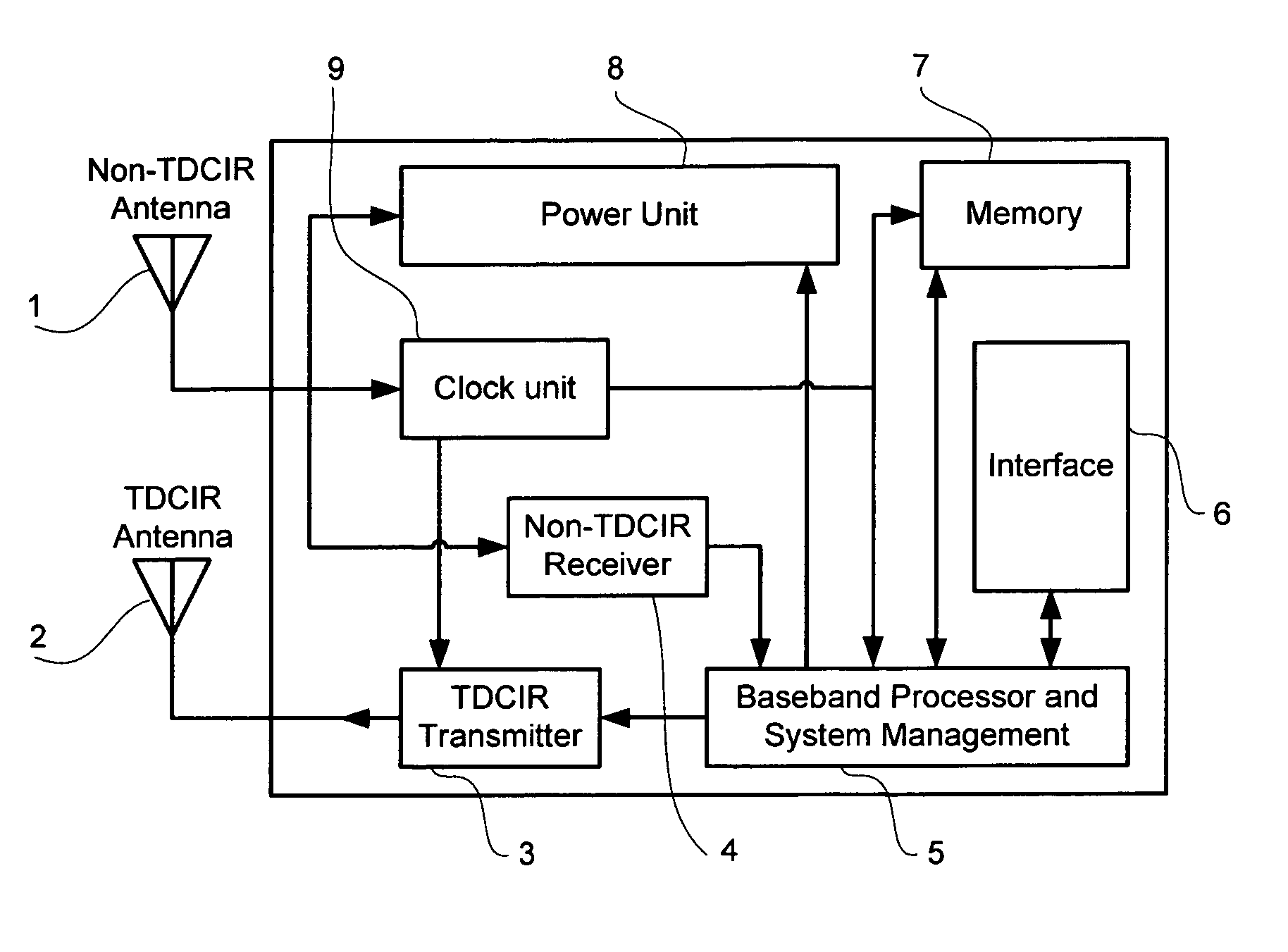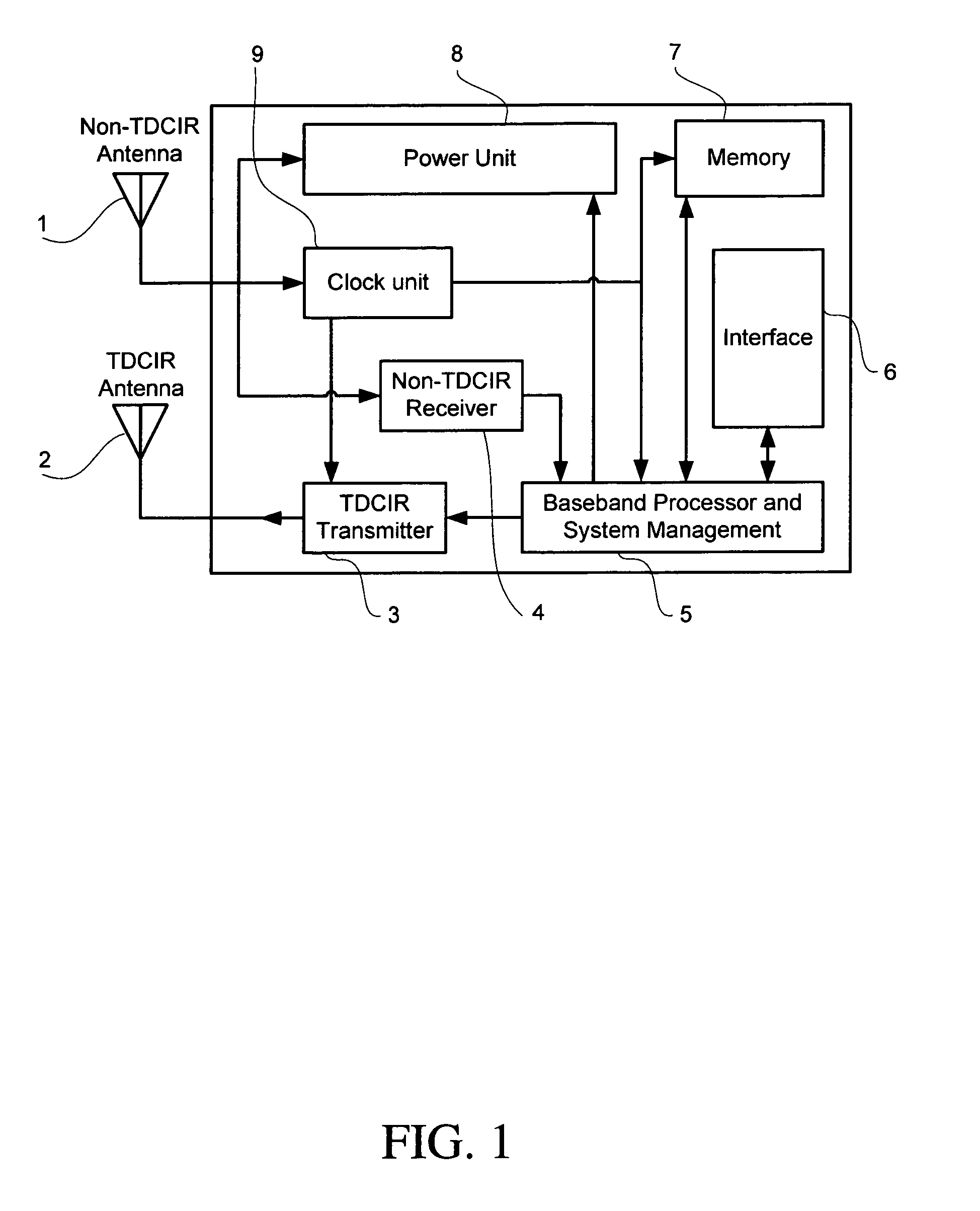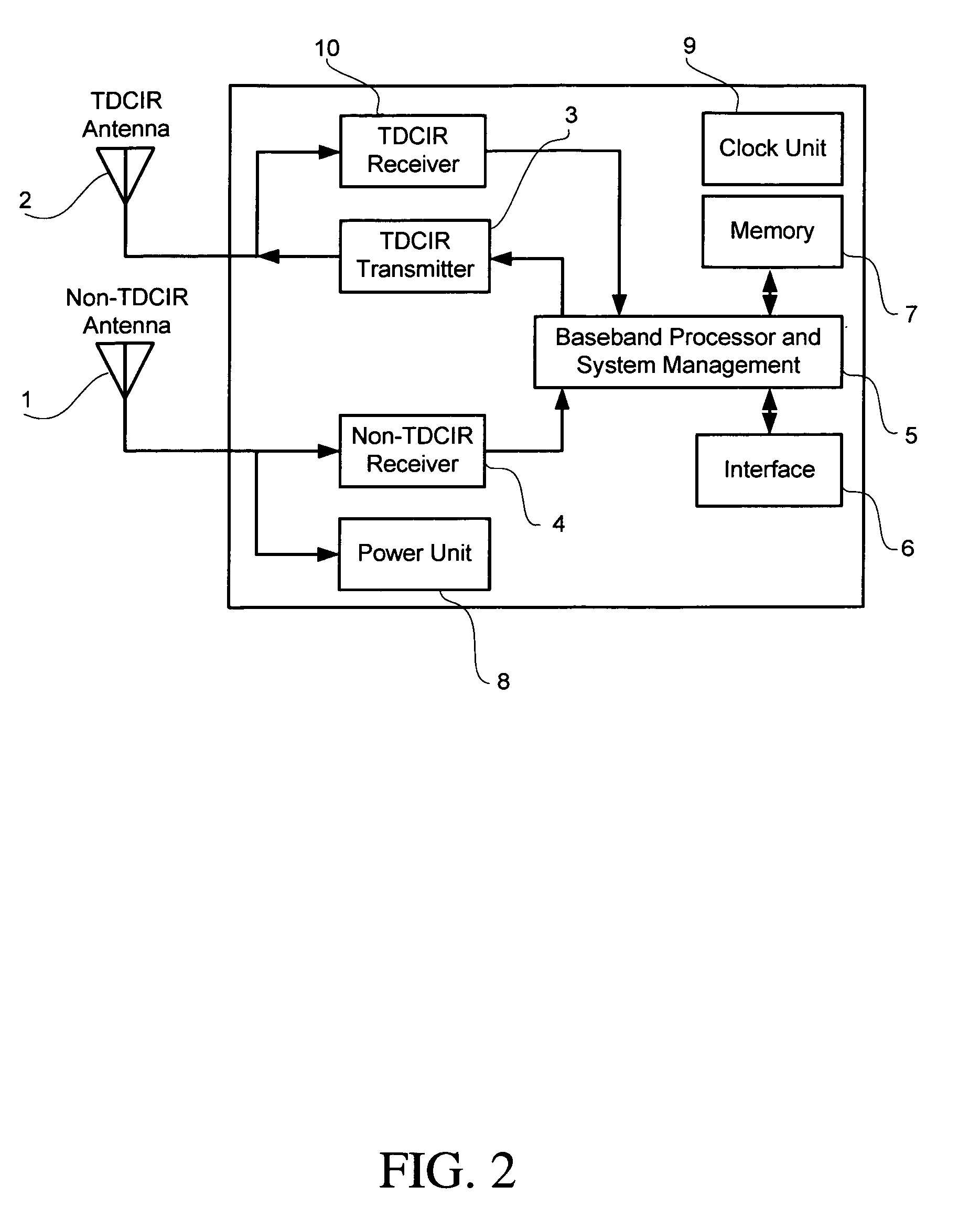Radio frequency tag and reader with asymmetric communication bandwidth
a radio frequency tag and asymmetric communication technology, applied in the field of communication, can solve the problems of polluting the rf spectrum, affecting the performance of the radio frequency tag, and affecting the performance of the radio frequency tag, and achieves the effects of enhancing the effect of continuous wave impulse radio communication between the transponder (the tag) and the interrogator (the reader). high speed and high data ra
- Summary
- Abstract
- Description
- Claims
- Application Information
AI Technical Summary
Benefits of technology
Problems solved by technology
Method used
Image
Examples
second embodiment
[0060]The second embodiment deploys an additional impedance manipulation circuitry that makes the transponder completely accessible under legacy standards such as the UPC Global Gen2 standard (Gen2 Specs 05). The price to pay is an additional block of backscatter modulator, a more complex baseband / MAC unit and a non-TDCIR antenna that cannot anymore be optimized for reception only.
[0061]This second embodiment also presents a rechargeable power source that is charged by the incident power and runs the system when the incident signal is missing or too weak to provide the system with enough power. The presence of an external power source is a trivial matter when the data communication is a standalone unit as opposed to a backscattering system that is made to reflect back the incident signal rather than propagate the signal by its own power.
[0062]The high data rate offered by the TDCIR transmitter makes it possible to have additional sources of data flow that can use the invented circui...
third embodiment
[0067]A variant of this invention deploys a multi-band continuous wave energy collection segment that collects energy from several different frequency bands that can be proactively generated by the reader or an energizing beacon, or that are ambient signals available in the environment. This third embodiment and its use of the Sierpinski antenna constitute a superb embodiment where this energizing scheme can be applied. This multi-band energy absorption scheme is detailed in FIG. 13.
[0068]A reader signal is normally a carrier on which the reader command and data are modulated. This carrier signal also provides the power for the tag. The signal from the reader to the tag can be continuous or sequentially pulsed, depending on the way the tags need to be powered up, the number of the tags, and the multi-access method used for simultaneous access of multiple tags. A reader can choose to power up tags with a combination of bands and propagation techniques. For example, utilizing differen...
first embodiment
[0075]Referring to FIG. 1 there is shown a block diagram of the main components of a transponder or tag in the invention. A non-TDCIR antenna (1) is the first stage of the receiver front-end that is capable of absorbing energy from non-TDCIR signals in general and electromagnetic energy from the continuous waves radiated from interrogating devices in particular. In the case of a passive UHF RFID tags, this antenna is tuned to the UHF band. The continuous wave signal radiated from a reader carries the system clock signal, commands, data and time references that are recovered by different units of the tag. The power recovery unit (8) rectifies the incident continuous wave and regulates it to voltage levels required by different subsystems of the tag. A Power on Reset unit monitors the voltage levels of the power recovery unit to make sure the total unit will function properly. The clock unit (9) and the non-TDCIR (4) blocks take the incident signal detect its envelope and recover the ...
PUM
 Login to View More
Login to View More Abstract
Description
Claims
Application Information
 Login to View More
Login to View More - R&D
- Intellectual Property
- Life Sciences
- Materials
- Tech Scout
- Unparalleled Data Quality
- Higher Quality Content
- 60% Fewer Hallucinations
Browse by: Latest US Patents, China's latest patents, Technical Efficacy Thesaurus, Application Domain, Technology Topic, Popular Technical Reports.
© 2025 PatSnap. All rights reserved.Legal|Privacy policy|Modern Slavery Act Transparency Statement|Sitemap|About US| Contact US: help@patsnap.com



